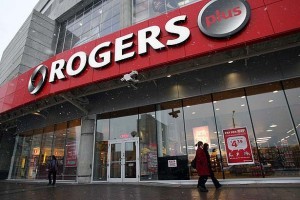The biggest share of the major food and pharmaceutical distribution company in Quebec is owned by creditors not its shareholders, an analysis of the recent financial report reveals.
Despite increase in revenue experienced during since last year, the company continues to see its equity reducing compared to its liabilities. At the end the first quarter of 2016, Metro’s liabilities (what the company owes to external actors) stand at $3,008.3 million compared to $ 2,616.0 million in equity (what belongs to the company and its shareholders).
Metro’s Equity is decreasing at the rate of 1.6 percent
(To read the entire document, please click on the embedded image below)
Source:Metro Inc.
To date, Metro’s liability represents 53.5 percent of its total assets. At the end of last year it represented 50.7 percent while in 2014 it was at 49.2 percent. To put it simply, this means that the biggest share of Metro is now owned by its creditors instead of shareholders.
The increase in liabilities is attributed to increase of bank loans that the company has to pay until 2027 and increasing unpaid taxes; according to the financial statement contained in the company’s most recent financial report.
Even though major corporations tend to have a share of liabilities, it’s not safe to have a negative capital structure (difference between what belongs to shareholders and what it owes to external people) because if business goes slow the probability of bankruptcy increases; according to Ildebrando Lucas, a business professor at Algonquin College.
Even though Metro has been able to make profit out of loans, Lucas warns that there isn’t always a grantee that a company will continue to make money especially when it has to pay a lot of interests on long term loans and market conditions may change.
“In Canada things are tight [referring to the economy] and people may not buy as much as they used to. If such thing happens it affects severely companies with significant higher share of debts than equity”, Lucas says.
Metro’s liabilities are increasing at a higher rate.
Source: Metro
Most of the bank loans were used in investing in new businesses and modernizing existing stores. When he was presenting the results of the first quarter of 2016, the CEO of Metro, Eric La Fleche, announced that Metro opened two new stores, 10 more were modeled and one store was closed.
“For the fiscal year 2016 we intend to invest $300 million in our network for ten new stores and 30 major renovations”, Metro CEO announced.
Metro also is focusing on expending its business by investing in other companies. According to the 2015 annual report, Metro acquired 75 percent of the net asset of Premiere Moisson, a premium bakery in Quebec. It also acquired 100 percent of the net assets including real estate of two food stores in Ontario. Both acquisitions were calculated at $101.6 million.
Increase of loans increased revenues
The increase in revenue observed since last year is attributed to the company’s financing from bank loans.
In the last quarter of 2015 and the first quarter of 2016, Metro made $131.7 million and $139.8 million respectively. This represents an increase of 6.2 percent. In the same period, bank loans increased from $ 1146.0 million to $1405.9 million. Metro’s total debt increased by 10.2 percent from $ 2,729.9 million to $3,008.3 million respectively.
“Major corporations tend to have a big share of liabilities because they are always growing their businesses. In reality it’s good to bring debt into the company as far as the shareholders are concerned because it increases their share price”, Lucas explains.
From the beginning of this year, Metro’s share price has gone up by 6 percent but the company still has an average rating of “Hold”, according to different equities research analysts.
The rating of “Hold” means that if you own a security you still shouldn’t sell, but you also should not buy the security if you don’t own it already (or do not buy more of it if you do). As of January 29, an average price target of Metro share was C$41.42.
Metro Inc. stock price
Metro’s share price by nijepi on TradingView.com
Source: TradingView












